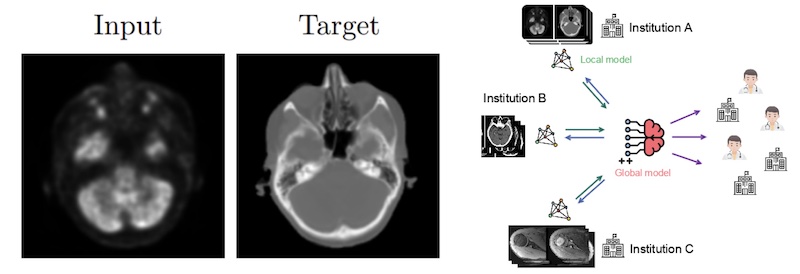Federated image translation in radiotherapy: a real-world feasibility study
- chair:Medical Imaging for Modeling and Simulation
- type:Bachelor thesis
- tutor:
- person in charge:
Mathias Krohmer Zabaleta
-
Motivation
In the last years, image-to-image translation in radiotherapy (Fig.1) has raised increasing interest based on artificial intelligence algorithms such as machine learning or DL. Federated learning is a machine learning approach that enables multiple parties to collaboratively train a model without sharing their data (Fig. 2). This project aims to develop a federated learning framework specifically for translating medical images from one modality to another. By eliminating the need for data centralization, this approach ensures patient data privacy while enabling collaboration between healthcare institutions.
Within the federated learning context for image-to-image translation in radiotherapy, can more complex neural network architectures achieve better performance? Would training such models be feasible in a real-world setting considering limitations on resources and time?
Student Project
Your tasks include:
1. Literature review
2. Train and compare different federated learning models for image-to-image translation in radiotherapy
3. Based on the findings from the literature review and your own comparative analysis, conduct a feasibility study to assess the practicality of using complex models for image-to-image translation in real-world radio therapy workflows.Skills needed:
- Python, PyTorch framework.
- Deep learning and machine learning fundamentals.
- Image processing.
- Medical images is plus.
- Federated learning is plus.

